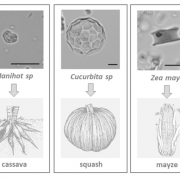
Early Holocene crop cultivation and landscape modification in Amazonia (Nature)
Plant Science Research WeeklyTo date, archeobotanical and genetic studies indicated four centers of plant cultivation in the early Holocene: China and the Near East in the Old World, and southwestern Mexico and northwestern South America in the New World. Recent research of Lombardo et al. revealed that Llanos de Moxos (Bolivia)…
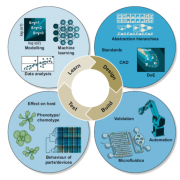
Plant Science Research Weekly: April 17th
WWR Full PostReview. Beyond natural: Synthetic expansions of botanical form and function
“The goal of synthetic biology is to advance the ability to dependably and consistently design or reprogram living organisms and to fabricate products from biologically-derived materials.” In this review, Patron focuses…

Recognizing Plant Physiology authors: Isha Kalra
Plant Physiology, Plant Physiology: Author ProfilesIsha Kalra, first author of Chlamydomonas sp. UWO 241 exhibits high cyclic electron flow and rewired metabolism under high salinity
Current Position: Ph.D. candidate, Microbiology Department, Miami University
Education: B.E. (Hons.) Electronics and Instrumentation + MSc. (Hons.) Biological Science…
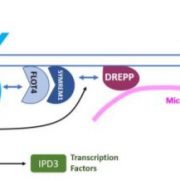
DREPP in Nanodomains Regulates Microtubule Fragmentation during Symbiotic Infection
Research, The Plant Cell: In BriefIn the legume-rhizobium root nodule, nitrogen fixing rhizobia are accommodated inside plant cells. In the Medicago – Sinorhizobium model system, the internalization of rhizobia into the host plant is triggered by Nod factors secreted from the symbiotic bacteria. The signals are perceived by the host…
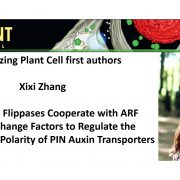
Recognizing Plant Cell authors: Xixi Zhang
The Plant Cell, The Plant Cell: Author ProfilesXixi Zhang, first author of Arabidopsis Flippases Cooperate with ARF GTPase Exchange Factors to Regulate the Trafficking and Polarity of PIN Auxin Transporters
Current Position: Predoctoral visiting scientist in Prof. Jiří Friml’s lab at Institute of Science and Technology, Austria (IST Austria);…
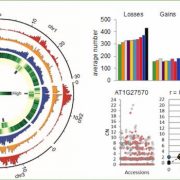
Copy Number Variations in the Arabidopsis Genome
Research, The Plant Cell, The Plant Cell: In a NutshellŻmieńko et al. generate a catalog of large copy number variations in Arabidopsis, shedding light on the genetic basis of phenotypic variation. Plant Cell https://doi.org/10.1105/tpc.19.00640
By Agnieszka Żmieńko and Marek Figlerowicz, Institute of Bioorganic Chemistry, Polish Academy of Sciences,…

Plantae Presents: Detlef Weigel and Remco Stam
Blog, Plantae Presents, Research SkillsDue to the COVID-19 pandemic many seminar series and conferences have been canceled or postponed. In response to this, and to make sure plant scientists can continue to communicate their latest work to their peers, The American Society of Plant Biologists launched a virtual seminar series via our online…
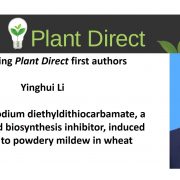
Recognizing Plant Direct authors: Yinghui Li
Plant Direct, Plant Direct: Author ProfilesYinghui Li, first author of Exogenous sodium diethyldithiocarbamate, a Jasmonic acid biosynthesis inhibitor, induced resistance to powdery mildew in wheat
Current Position: post-doctoral researcher
Education: PhD and Master, College of Agriculture, China Agricultural University, Beijing, China
Non-scientific…
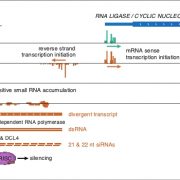
The possible danger of divergent non-coding transcription in plants: widespread RNAi
Research, The Plant Cell, The Plant Cell: In a NutshellThieffry et al. give a definitive answer to the question of divergent transcription initiation in Arabidopsis, and discover that if left unchecked, it would lead to rampant RNAi. The Plant Cell (2020) https://doi.org/10.1105/tpc.19.00815
By Albin Sandelin 1,2, Peter Brodersen 1 and Axel Thieffry 1,2,…

